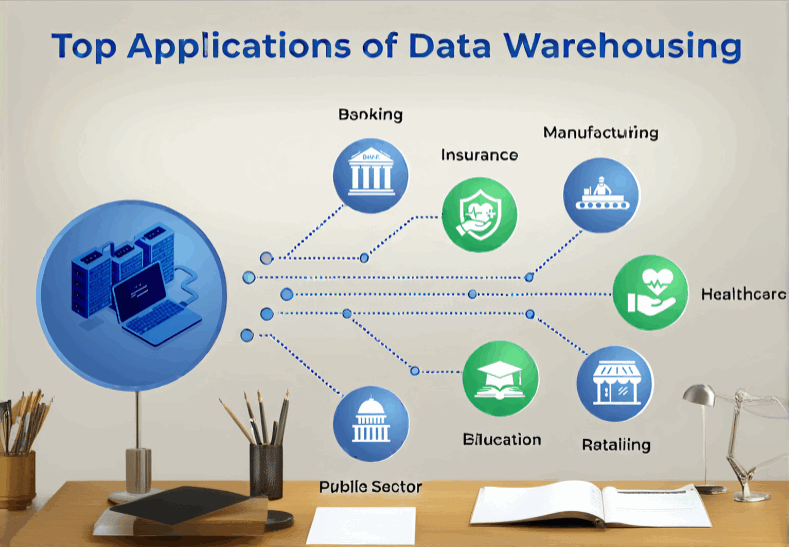How to Build a Data Warehouse and Data Analytics Solution for Hospitals
The healthcare industry is rapidly transforming with the integration of technology. Hospitals are leveraging data to enhance decision-making, improve patient care, and optimize operational efficiency. Creating a robust data warehouse and employing data analytics are foundational steps in this journey. Here’s a comprehensive guide to building these solutions and exploring their use cases.
Steps to Create a Data Warehouse for Hospitals
- Define Objectives
Clearly outline the goals of the data warehouse. Examples include tracking patient outcomes, reducing hospital readmissions, or optimizing resource allocation. - Identify Data Sources
Common data sources in a hospital include:- Electronic Health Records (EHR)
- Laboratory Information Systems (LIS)
- Radiology Information Systems (RIS)
- Patient Management Systems
- Financial and billing systems
- Data Integration
Use ETL (Extract, Transform, Load) tools to standardize and aggregate data from various sources. Ensure compliance with data privacy regulations such as HIPAA. - Database Design
Design the data warehouse schema based on the hospital’s reporting needs. Common architectures include star schema or snowflake schema. - Implement a Data Platform
Deploy scalable cloud-based solutions like AWS Redshift, Google BigQuery, or Alibaba Cloud DataWorks for storage and processing. - Develop Analytics Capabilities
Use tools like Power BI, Tableau, or Python-based analytics frameworks to create dashboards and reports. - Ensure Data Security and Compliance
Implement encryption, access control, and monitoring to protect sensitive data. Ensure compliance with healthcare regulations.
Data Analytics Use Cases for Hospitals
- Patient Readmission Prediction
How It Works: By analyzing patient records, treatment histories, and post-discharge follow-ups, predictive models can identify patients at high risk of readmission.
Benefits:- Reduced readmission rates
- Improved patient care continuity
- Cost savings for both the hospital and patients
- Optimizing Staff Scheduling
How It Works: Analytics tools analyze historical patient admission trends and staff workload data to predict peak times. Hospitals can then optimize staff allocation.
Benefits:- Reduced staff burnout
- Enhanced patient care during peak hours
- Cost-efficient resource utilization
- Inventory Management for Medications and Supplies
How It Works: Analytics tools track medication usage patterns and supply levels to predict demand and avoid stockouts or overstocking.
Benefits:- Avoidance of critical supply shortages
- Reduced wastage due to expired supplies
- Lower inventory costs
- Disease Outbreak Monitoring
How It Works: Integrating patient data with public health databases enables early detection of disease outbreaks using pattern recognition algorithms.
Benefits:- Proactive response to outbreaks
- Enhanced public health safety
- Better resource allocation during emergencies
- Personalized Treatment Plans
How It Works: By analyzing genetic information, medical history, and lifestyle data, analytics provides personalized treatment recommendations for patients.
Benefits:- Improved treatment outcomes
- Higher patient satisfaction
- Reduced trial-and-error in treatments
Benefits of a Data Warehouse and Analytics in Hospitals
- Enhanced Patient Care
Data-driven insights lead to timely interventions and improved treatment quality. - Operational Efficiency
Analytics optimizes processes, reducing bottlenecks in patient flow and resource utilization. - Cost Savings
Predictive analytics reduces unnecessary expenses by identifying inefficiencies and avoiding waste. - Improved Compliance
Centralized data ensures hospitals meet reporting requirements and regulatory standards. - Data-Driven Decision-Making
Real-time dashboards and reports empower administrators and clinicians to make informed decisions.
Conclusion
Building a data warehouse and implementing analytics in a hospital is not just a technological upgrade but a step toward modern, patient-centric healthcare. With use cases such as patient readmission prediction, staff optimization, and personalized treatment plans, hospitals can achieve better outcomes and operational excellence. By investing in these solutions, healthcare institutions can ensure a brighter, healthier future for their patients.
If you need assistance in building a comprehensive data warehouse and analytics solution, partnering with experienced technology providers can help ensure a smooth implementation process.





